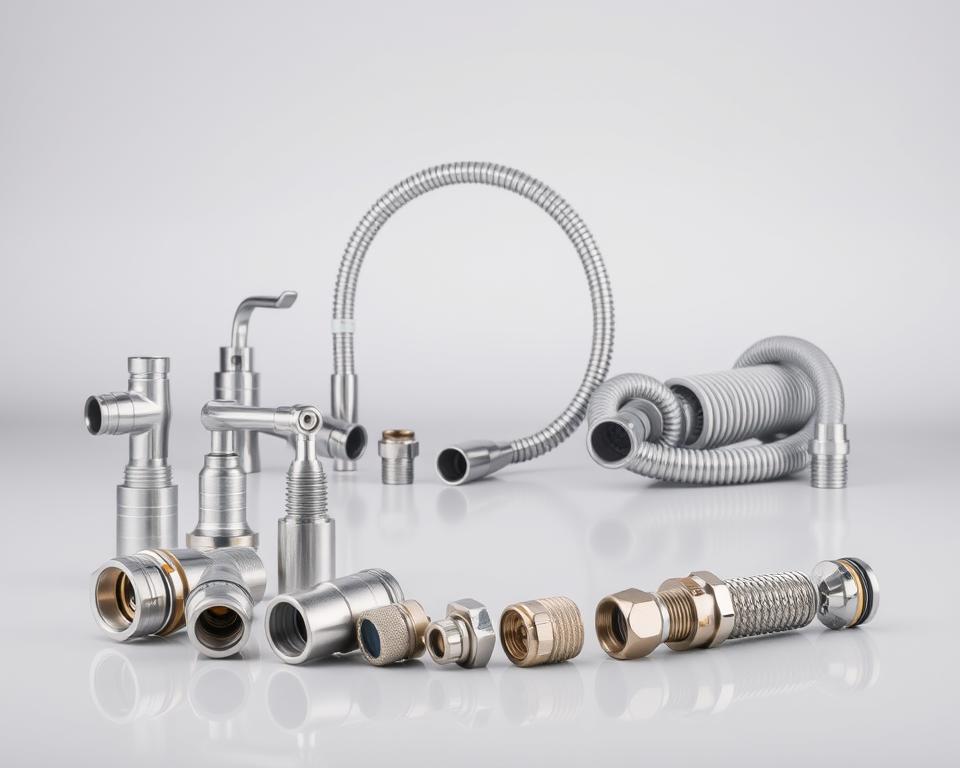Best Shurflo 12v Pump Models for Your Recreational Vehicle Setup
Since 1968, Shurflo has been at the forefront of Pump technology, addressing multiple fields, with a notable base of over 1 million RV owners. These admirers trust Shurflo for their fresh water needs. Hence, choosing a trustworthy Shurflo 12v Pump for your RV is essential. It secures availability of water wherever you venture. In this article, we explore the finest models of Shurflo 3 GPM pump. We will emphasize their operational efficiency, output, and user satisfaction.
Overview of Shurflo Water Pumps
Since its establishment in Southern California, Shurflo has established itself in the Pump industry. Globally renowned for its compact, high-efficiency Pumps, Shurflo products are a top choice in recreational vehicles (RVs). Their cutting-edge technology guarantees the availability of Water, enhancing the comfort of roadway adventures.
Shurflo at a Glance
Shurflo RV Pumps excel through exceptional reliability and effectiveness. Designed to meet the various RV users’ needs, these Pumps cover needs from basic to advanced. The Shurflo 4028-100-E54, known for its silent operation and a flow rate of 2.3 GPM, suits smaller RVs and campers perfectly. Alternatively, for those with greater demands, the Shurflo 5059-1310-D011 produces an impressive 5.3 GPM at 60 psi.
Why a Dependable Pump Matters for Your RV
The installation of a trustworthy Pump is crucial for the flawless performance of an RV’s fixtures, like sinks, showers, and toilets. Without a trustworthy Water Pump, leaks or low pressure may occur, detrimentally impacting your journey. By choosing high-quality Shurflo RV Pumps, travelers secure continuous access to clean and pressurized water at all times.
Understanding the Shurflo 12v Water Pump
The Shurflo 12v Pump is a standout in the RV pump system world, noted for its impressive design and function. Featuring cutting-edge technology and pragmatic features, Shurflo’s products are essential for RV owners seeking reliable operation on the road.
Features of Shurflo 12v Water Pumps
Shurflo 12v Pumps are equipped with numerous technological enhancements aimed at boosting RV systems’ functionality. For instance, the Shurflo 4028-100-E54 has a 2.3 GPM flow rate, perfect for compact RVs, and a durable stainless steel motor with a sealed design for extended service life. The Shurflo 4008-101-A65 runs at 3.0 GPM and 55 psi, with a built-in check valve to stabilize pressure.
Next, the Shurflo 4048153-E75 model offers a 4.0 GPM high flow and self-priming capability up to 6 feet. The Shurflo 5059-1310-D011 model advances performance with 5.3 GPM at 60 psi and self-priming up to 8 feet. These models aim for high performance combined with minimal noise. Every Shurflo Pump comes with a three-year limited warranty, contingent on using a Shurflo screen filter.
Benefits of 12 Volt Pumps in RV Systems
12 volt Water Pumps significantly enhance RV living, with benefits like efficient power use. This aspect allows RV owners can make the most of their battery resources without compromising Water availability. The optimized performance enhances water pressure, key to operating multiple fixtures concurrently.
Additionally, Shurflo Pumps seamlessly integrate with RV electrical systems, easing installation. This easy wiring, combined with self-priming technology and high flow rates, makes these Pumps essential for RV enthusiasts seeking optimal water service.
Leading Shurflo 12v Pump Options
Getting the right Shurflo Pump for your RV requires understanding the variety available. We will review three leading models recognized for their dependability, efficiency, and output. Every model is tailored to specific requirements, guaranteeing the right match for your setup.
Shurflo 2088 Water Pump Overview
The Shurflo 2088 Water Pump is renowned for its powerful performance. It meets demanding water requirements, earning popularity among RV owners. Its flexible design supports various water outlets. Additionally, it comes with a one-year limited warranty for added security.

Shurflo 3.5 GPM Pump Overview
The Shurflo 3.5 GPM model offers a reliable flow rate perfect for regular RV needs. It runs quietly and efficiently, providing a consistent water supply. This balance of performance and comfort makes it an optimal choice for frequent travelers.
Shurflo 2.8 GPM Water Pump
The compact Shurflo 2.8 GPM Water Pump offers an efficient solution for space-conscious users. It incorporates three separate pumping chambers to reduce friction and ensure smooth operation. This model is ideal for users requiring steady operation while maximizing available space.
Overview of Shurflo RV Water Pumps Comparison
To pick the best Shurflo RV Water Pump, one must consider performance data and specifications. These aspects are vital in matching the pump to your requirements. Key metrics such as flow rate and pressure capacity greatly influence a Pump’s operational efficiency. The sound output of Shurflo Water Pumps also significantly impacts user comfort in limited spaces.
Critical Performance Data
Shurflo Water Pumps are notable for their remarkable performance metrics. When picking a Water Pump, it’s important to consider key data including:
| Version | Peak Flow Rate (GPM) | Pressure (PSI) | Lift Height (Feet) | Measurements (in Inches) | Warranty |
|---|---|---|---|---|---|
| SEAFLO 55 Series | 5.5 | 60 | 9 | 8.5 x 5.75 x 5.16 | 4 Years |
| Shurflo Precitrade | 3.5 | 45 | 12 | 8.5 x 5 x 4.5 | 30 Days |
Quiet Operation and Efficiency
The noise level of Shurflo Water Pumps influences the RV pump system experience. The SEAFLO 55 Series features vibration dampening rubber feet, beneficial for users desiring low noise. Alternatively, the Shurflo Precitrade does not incorporate noise-reducing features, possibly impacting sound-sensitive users. Efficiency, characterized by low power consumption and high performance, is crucial. The durability of Shurflo Pumps, including their capacity to operate dry and heat protection, further secures their reliability in diverse settings.
How to Install Your Shurflo Pump
Ensuring correct installation is essential for both performance and durability of your Shurflo Water Pump. It commences with choosing the best location in your RV, impacting overall operation. Opt for a dry, airy location adjacent to the water tank to reduce piping and improve performance.
Selecting the Optimal Installation Spot
Consider these key pointers for choosing the installation spot:
- Secure the Pump on a stable platform no further than 6 feet (2 meters) from the water tank.
- Ensure there is at least 1 cubic foot of space around the Pump for adequate ventilation.
- Position the Pump in an accessible area to facilitate maintenance and strainer cleaning.
Detailed Installation Instructions
For a smooth RV Pump installation, follow this detailed guide:
- Utilize 1/2 bsp John Guest fittings and pipes for all connections.
- Mount a pre-filter ahead of the Water Pump to prevent debris buildup.
- Link the Water Pump outlet to the accumulator tank’s inlet with John Guest fittings and pipes.
- Route the final connections from the accumulator tank to the faucet or water outlets.
- Attach a 12-volt DC power source to the Water Pump by connecting the red wire to positive and the black wire to negative.
- Ensure safety by placing a fuse in the positive cable between the battery and the Water Pump.
- Begin priming by loading the water tank and activating the Water Pump until a steady flow occurs.
- Tune the accumulator tank pressure if the Pump cycles quickly, per manufacturer instructions.
- After installation, test the system to ensure everything operates correctly and secure any loose connections.
- Should you have installation doubts, reach out to 0800 303 306 for help.
Install flexible high-pressure hoses on the inlet and outlet ports to lessen noise and vibration. Ensure plumbing has a minimum inner diameter of 1/2″ (13mm). Wiring should be sized correctly: at least 14 AWG (2.5mm²), or 12 AWG (4mm²) for optimal results. Mount the Pump firmly to avoid vibrations transmitting to the RV, ensuring quieter and more efficient performance.
Shurflo Pumps: Maintenance and Troubleshooting
Regular maintenance of Shurflo Pumps is crucial for ensuring a long lifespan and reliable performance. Implementing effective maintenance practices can help avoid common Water Pump issues and enhance the overall efficiency of your RV water system. Knowing how to maintain and diagnose problems with Shurflo Water Pumps allows RV owners to manage challenges before they escalate.
Maintenance Steps
Taking proper care of your Shurflo Pump includes the following steps:
- Inspect frequently for any damage or wear.
- Wash filters often to avoid blockages.
- Check the wiring for any signs of damage or fraying.
- Make sure inlet and outlet tubes are free from restrictions.
- Regularly check that the system pressure does not exceed 110 PSI, protecting the Pump.
- Drain and rinse the Water Pump before disassembling for service.
Troubleshooting Common Problems
Below is a troubleshooting guide addressing common problems with Shurflo Water Pumps:
| Issue | Indicators | Remedy |
|---|---|---|
| No Operation | Power available, no operation | Examine the pressure switch and test by temporarily bridging the red wires. |
| Pump runs but loses pressure | Intermittent cycling and reduced flow | Examine both inlet and outlet for debris and remove any restrictions. |
| Noisy operation | Abnormal noises during use | Check for loose mounting screws and ensure proper grounding for safety. |
| Motor does not start | Lack of response upon activation | Examine wiring and assess motor brushes for damage. |
| Excessive Heat | High temperatures during operation | Check the thermal protection system and clean the commutator and brushes. |
Final Thoughts
In conclusion, Shurflo 12v Pumps are exceptional options for RV owners. They integrate trustworthy operation and robust performance, delivering essential water supply in diverse environments. This boosts the travel experience vastly. Selecting the Shurflo 2088, 3.5 GPM, or 2.8 GPM models provides reliable performance and robust construction.
Shurflo Pumps are not only suited for RVs but are versatile enough for agriculture and marine applications. They feature low power consumption while delivering high output. These solutions are efficient and trustworthy. Additionally, their simple maintenance and rebuild possibilities extend lifespan and lower overall costs.
Choosing a Shurflo Pump elevates your RV Water system’s efficiency. These Water Pumps are renowned for quiet operation and self-priming technology. Such attributes highlight Shurflo’s dependable performance and make them a smart option for efficiency-minded users. With Installation Parts Supply, you receive top-quality products that elevate your outdoor adventures through exceptional service.
FAQ
What are the best Shurflo Pump models for RVs?
Key models for RVs include the Shurflo 2088, renowned for its high output. Furthermore, the Shurflo 3.5 GPM meets regular demands, and the Shurflo 2.8 GPM caters to smaller applications.
How much water flow can I expect from a Shurflo 12v Pump?
Shurflo 12v Pumps deliver flow rates between 2.8 to 3.5 gallons per minute (GPM). This output is adequate for operating sinks, showers, and toilets in RVs.
Do Shurflo Pumps operate quietly?
Yes, Shurflo Pumps are designed for quiet operation. This feature enhances comfort during the use of water fixtures in your RV.
What is the installation process for a Shurflo Water Pump in an RV?
Select an installation site adjacent to water and electrical connections for your Shurflo Water Pump in the RV. Next, refer to a step-by-step guide covering tools, wiring, and proper mounting.
What maintenance is needed for Shurflo Water Pumps?
Regular maintenance, including filter cleaning and wiring checks, is essential for Shurflo Pumps. These steps help prolong pump life and prevent issues like leaks or uneven water flow.
How can I address unusual sounds from my Shurflo Water Pump?
Strange noises from your Shurflo Pump may indicate air leaks or faulty parts. Examine the hose connections for leaks, tighten all connections, and follow the manual’s troubleshooting advice.
Can I use a Shurflo Pump in a different application outside of RVs?
Indeed, they are versatile and can be used in marine, agricultural, and recreational settings. Just ensure they meet the specific flow and pressure needs of these applications.
What advantages does a self-priming Water Pump offer?
Shurflo’s self-priming Pumps remove air automatically for rapid and effortless operation. This quality is particularly advantageous in RV systems.
Do Shurflo Pumps consume little power?
Absolutely, Shurflo Water Pumps combine low power consumption with high operational efficiency. Thus, they are a smart, energy-saving choice for RV systems.








